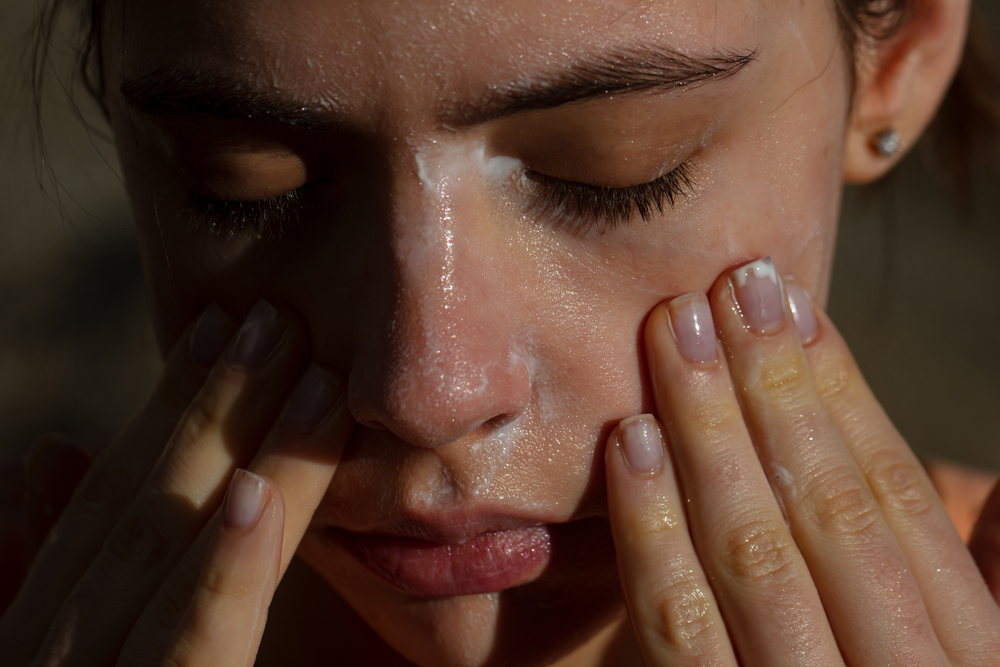The Ultimate Guide to Glowing Skin: Science-Backed Skincare for Every Skin Type
Introduction
Achieving radiant, healthy skin goes beyond surface-level beauty—it reflects your overall health and wellbeing. With countless products and conflicting advice available, building an effective skincare routine can feel overwhelming. This comprehensive guide cuts through the noise, offering dermatologist-approved strategies for all skin types and concerns. Whether you’re battling acne, fighting signs of aging, or simply seeking that elusive glow, these evidence-based practices will help you cultivate your healthiest skin yet.
Understanding Your Skin
Your skin is your body’s largest organ, with a complex structure that deserves proper care:
Skin Layers & Functions
- Epidermis: Protective barrier against environmental damage
- Dermis: Contains collagen, elastin, and blood vessels
- Hypodermis: Fat layer that cushions and insulates
Skin Types Demystified
- Oily: Shiny appearance, prone to breakouts
- Dry: Flaky, tight feeling, visible lines
- Combination: Oily T-zone, dry cheeks
- Sensitive: Reacts easily to products
The Essential 5-Step Routine
1. Cleansing: The Foundation
- Morning: Gentle, pH-balanced cleanser
- Evening: Double cleanse (oil-based followed by water-based)
- Pro Tip: Use lukewarm water to prevent stripping natural oils
2. Exfoliation: Revealing Fresh Skin
- Chemical exfoliants (AHAs/BHAs) vs. physical scrubs
- Frequency: 1-3 times weekly based on skin tolerance
- Caution: Over-exfoliation damages skin barrier
3. Treatment: Targeted Solutions
- Serums for specific concerns (vitamin C for brightening, retinol for aging)
- Spot treatments for acne (benzoyl peroxide, salicylic acid)
- Patting technique for better absorption
4. Moisturizing: Hydration Balance
- Lightweight for oily skin (gel-based)
- Rich creams for dry skin (ceramide-infused)
- Don’t skip if you’re oily—hydration regulates oil production
5. Sun Protection: Non-Negotiable
- Broad spectrum SPF 30+ every morning
- Reapplication every 2 hours when outdoors
- Mineral vs. chemical sunscreens explained
Advanced Skincare Strategies
Nighttime Repair
- Retinoid use for collagen production
- Sleeping masks for intensive hydration
- Silk pillowcases to prevent creasing
Weekly Treatments
- Clay masks for oil control
- Sheet masks for hydration boost
- Professional-grade peels (at-home options)
Skin Concerns & Solutions
Acne Management
- Identifying types (blackheads vs. cystic)
- Ingredient spotlight: Niacinamide, tea tree oil
- Lifestyle factors (diet, stress management)
Anti-Aging Approaches
- Prevention: Sunscreen is your best defense
- Treatment: Peptides, growth factors
- In-office procedures vs. at-home care
Hyperpigmentation Solutions
- Tyrosinase inhibitors (vitamin C, kojic acid)
- Professional treatments (chemical peels, lasers)
- Patience required: 3-6 months for visible results
Nutrition for Radiant Skin
Skin-Loving Nutrients
- Vitamin C: Collagen synthesis
- Omega-3s: Reduce inflammation
- Antioxidants: Combat free radical damage
Hydration Principles
- Water intake recommendations
- Humectants in skincare vs. internal hydration
- Signs of dehydration in skin
Lifestyle Factors
Sleep & Skin Health
- Circadian rhythm’s impact on repair
- Best sleeping positions to prevent wrinkles
- Dark circle prevention strategies
Stress Management
- Cortisol’s effect on oil production
- Mindfulness techniques for clearer skin
- Stress-induced conditions (eczema flares)
Product Selection Guide
Decoding Labels
- Ingredient hierarchies (first 5 matter most)
- Marketing terms vs. clinically-proven ingredients
- Fragrance-free vs. unscented
Building a Budget Routine
- Where to splurge vs. save
- Drugstore gems with premium ingredients
- Multi-tasking products
Seasonal Adjustments
Summer Skincare
- Lighter textures
- Increased antioxidant protection
- Post-sun care
Winter Protection
- Barrier repair focus
- Humidifier benefits
- Layering techniques
Common Myths Debunked
“Natural is always better”
- Poison ivy is natural too
- Synthetic can be more stable and effective
“Expensive means better”
- Price doesn’t guarantee results
- Formulation and concentration matter most
“You don’t need sunscreen indoors”
- UVA penetrates windows
- Blue light protection benefits
When to See a Dermatologist
Warning Signs
- Changing moles
- Persistent rashes
- Unexplained redness or swelling
Professional Treatments
- Prescription options for stubborn acne
- Cosmetic procedures breakdown
- Allergy testing for reactive skin
Sustainable Skincare
Eco-Conscious Choices
- Reef-safe sunscreen
- Refillable packaging options
- Waterless products
Minimalist Approach
- Capsule skincare concepts
- Multi-use products
- Avoiding overconsumption
Conclusion
Beautiful skin begins with understanding your unique needs and committing to consistent care. By implementing these science-backed practices tailored to your skin type and concerns, you’ll build resilience against environmental stressors while enhancing your natural radiance. Remember that skin health is a journey—visible improvements take time, but every proper care step contributes to long-term results.
Your Action Plan
- Identify your primary skin concern
- Streamline your routine with essential steps
- Introduce one new beneficial ingredient
- Schedule a dermatologist consultation if needed
With knowledge as your foundation and patience as your guide, glowing skin is within reach for everyone.



